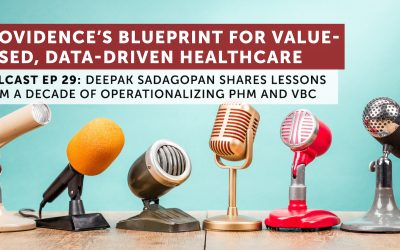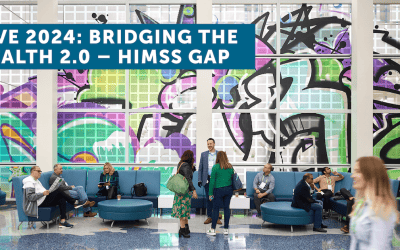
Our score is far from perfect, but we did quite well with our 2017 predictions: 7 Hits, 2 Misses and 4 Mixed. If this were a batting average, we would be instantly recruited into the majors:
Later this week we’ll publish our 2018 Predictions. Stay tuned.
Risk-based contracting for health IT solutions accelerates. MISS
While the rate of participation by providers in value-based payment models increased modestly, and more states adopted value-based payment models, the rate of risk-based contracting for health IT saw little growth in 2017. This is due to several factors: The Trump administration’s adoption of more voluntary approaches to future participation in value-based payment models, including bundles; challenges defining appropriate risk-sharing/pricing models, and legacy PMPM or PMPY licensing models.
HCOs demand clear ROI on their health IT spend. MIXED
Healthcare organizations (HCOs), while becoming more cognizant of the need for health IT to generate a true return on investment (ROI), have not significantly changed their purchasing decisions to reflect this change. This may simply be a function of an EHR hangover, where purchasing decisions are driven by breadth and depth of existing relationships with current vendor(s).
Progressive HCOs admit – their patient portals suck. MISS
As it turns out, progressive HCOs have been impressed with the portals they’ve built with solutions from their EHR vendors such as Allscripts, Cerner and Epic. But challenges remain: Increasing portal adoption among patients with slow Internet connections and/or a technology learning curve, along with a rising tide of consumer-centric engagement solutions, centered on holistic lifestyle and condition management, which have garnered interest from payers and employers interested in cutting costs while also improving outcomes.
Despite the hype, healthcare Internet of Things (IoT) stays on periphery. HIT
Connected devices remain visible and useful within healthcare facilities, especially to monitor ICU and post-surgical patients, but IoT security concerns have tempered enthusiasm for more widespread deployment. Outside the hospital, device use remains limited to remote patient monitoring (RPM) pilots. For example, the National Institutes of Health will use Fitbit devices in the All of Us precision medicine study, while Stanford Medicine is partnering with Apple for an atrial fibrillation trial.
Artificial intelligence (AI) and machine learning will remain outside the clinic. HIT
This year’s hype with AI and machine learning stretched definitions to the breaking point — even a basic statistical technique is now marketed as machine learning. AI-based diagnostic approaches are still struggling to be useful, even as an aid to clinicians. That being said, academic medical centers increasingly use NLP to mine unstructured text, crowds lined up around the block at RSNA to learn more about image recognition, and progressive HCOs regularly use these advanced analytics techniques to examine areas such as sepsis, length of stay, and readmissions risk.
Consumers find AI avatars as valuable as they are personal. MIXED
Virtual assistants have made some inroads for managing chronic conditions such as cancer and type 2 diabetes, though tools like Cortana, Google Now, and Siri still struggle with mental health and remain better positioned to deliver educational content and other prepackaged information. We see interest in virtual assistants that analyze patient input and recommend interventions. This brings value to the engagement experience, with much faster responses than emails or phone calls to physician offices. As solutions’ data sets grow, so will more personalized interventions and user experiences.
21st Century Cures Act interoperability provisions a dead letter. HIT
This prediction stands. Senate HELP Committee chair Lamar Alexander recently chided Jon White of the ONC for the time it was taking to to finalize rules about what constitutes “information blocking.” Rules may eventually be released but there will be wiggle room for all. In addition the environment for enforcement does not appear to favor patients.
EHR vendors get serious about API programs. HIT
All of the major EHR vendors either initiated or upgraded their API programs. FHIR-based APIs are the centerpieces of these efforts. Integrating the Healthcare Enterprise (IHE) is also busy FHIR-enabling its profiles. Developers today have way more opportunity to access FHIR APIs than they did last year. The one blind spot in these programs is write access to EHR data. Independent software vendors (ISVs) want write APIs, but most large systems and their EHR vendors have demurred.
Precision medicine fails to grow substantially outside of oncology. HIT
Despite an increasing number of vendors and continued investment, the precision medicine space remains challenging. While genetic-specific treatments and drugs are slowly making inroads for certain disease, the broader theme of social determinants of health (SDoH) is gaining more attention and will more dramatically influence population-wide health improvement.
Blockchain moves from hype to traction. MIXED
This has moved from hype to a serious topic of discussion – particularly for security and patient-controlled access to medical records. Traction, in terms of market solutions or installed and scaled applications, remains elusive. The largest healthcare systems experiment with blockchain, but a clear focus on use cases remains illusory.
HCOs continue to expand regionally via M&A. HIT
Through the end of September, 87 hospital and health system transactions occurred, and it is expected that the total for 2017 will slightly exceed last year’s total of 102 completed deals. The biggest moves of 2017 stand to be the Dignity Health-CHI merger, which would create the nation’s 10th largest hospital system – a monster that may quickly be eclipsed by the rumored Ascension-Providence St. Joseph merger. M&A is clearly moving beyond regional plays. Color-by-numbers barriers to M&A are dropping, with the recently announced CVS-Aetna and UnitedHealth-DaVita deals as prime examples.
Best-of-Breed PHM and analytics vendors continue to stay one-step ahead. MIXED
From a market share perspective, the EHR vendors and Optum racked up more wins in the last year than the independents. That said, the independents still have products and offerings that can go far deeper than the majors. While they stay ahead on the product front, they fell behind in the market. (The same can be said for care management vendors.)
HIMSS’17 will be far calmer and less frenetic. HIT
We were pleased that HIMSS17 focused less on hype and more on value, with demonstrations of operational use cases for network management, bedside patient engagement, data sharing, and clinical decision support. We also heard many vendors discussing services as an add-on to technology deployments, particularly for at-risk pricing and other value-based care initiatives.




0 Comments